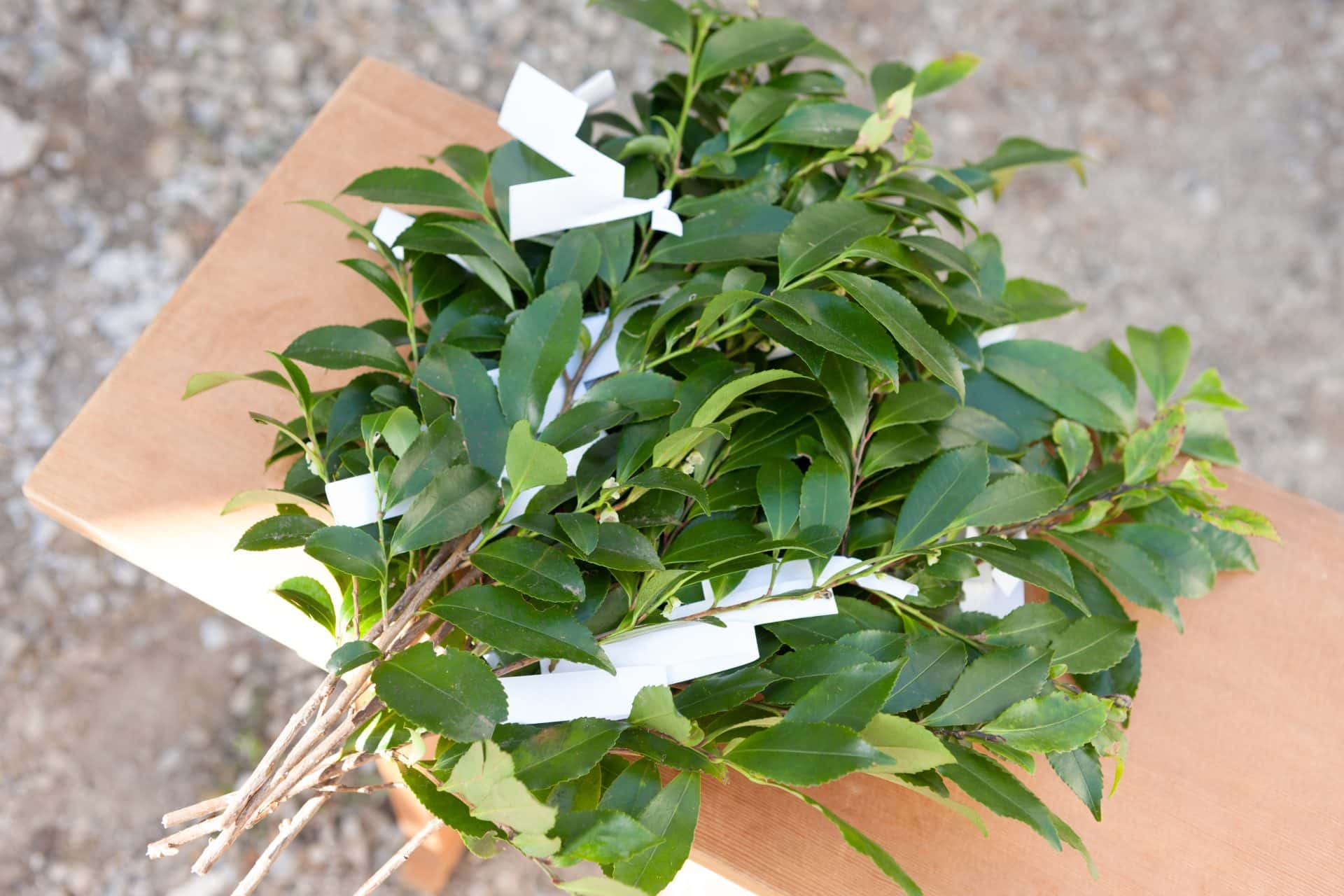Sakaki was originally a general term used for plants that marked the boundary between the sacred and the secular. Now it is mainly used for Cleyera japonica, a small shrubby evergreen with dark green leaves. They grow in forests and along their edges in countries in Southeast Asia. Sakaki stay green all year round, symbolising immortality, as do hinoki (Japanese cypress) and kansugi (Cryptomeria japonica), which are also considered sacred.
Traditionally, such trees are planted at Shinto shrines to mark a sacred site. Branches with leaves are used in Shinto rituals. Sakaki branches thereby act as a kind of bridge between the unseen world and the visible one.
Sakaki branches bridge the gap between worlds
Sakaki are made into tamagushi by attaching strips of paper (washi), silk, cotton or hemp textiles to the green leaves. In that form – tamagushi – the tree is also used to make offerings to the kami, as in this picture. This can happen during festivals, or at a kamidana – a home altar like the one in this exhibition.
According to legend, Amaterasu, the chief kami and deity of the sun, had retreated into a cave after an argument with her brother Susanoo. The universe was therefore without light. To lure Amaterasu back out of the cave and end the darkness, some kami decorated a large sakaki tree.










